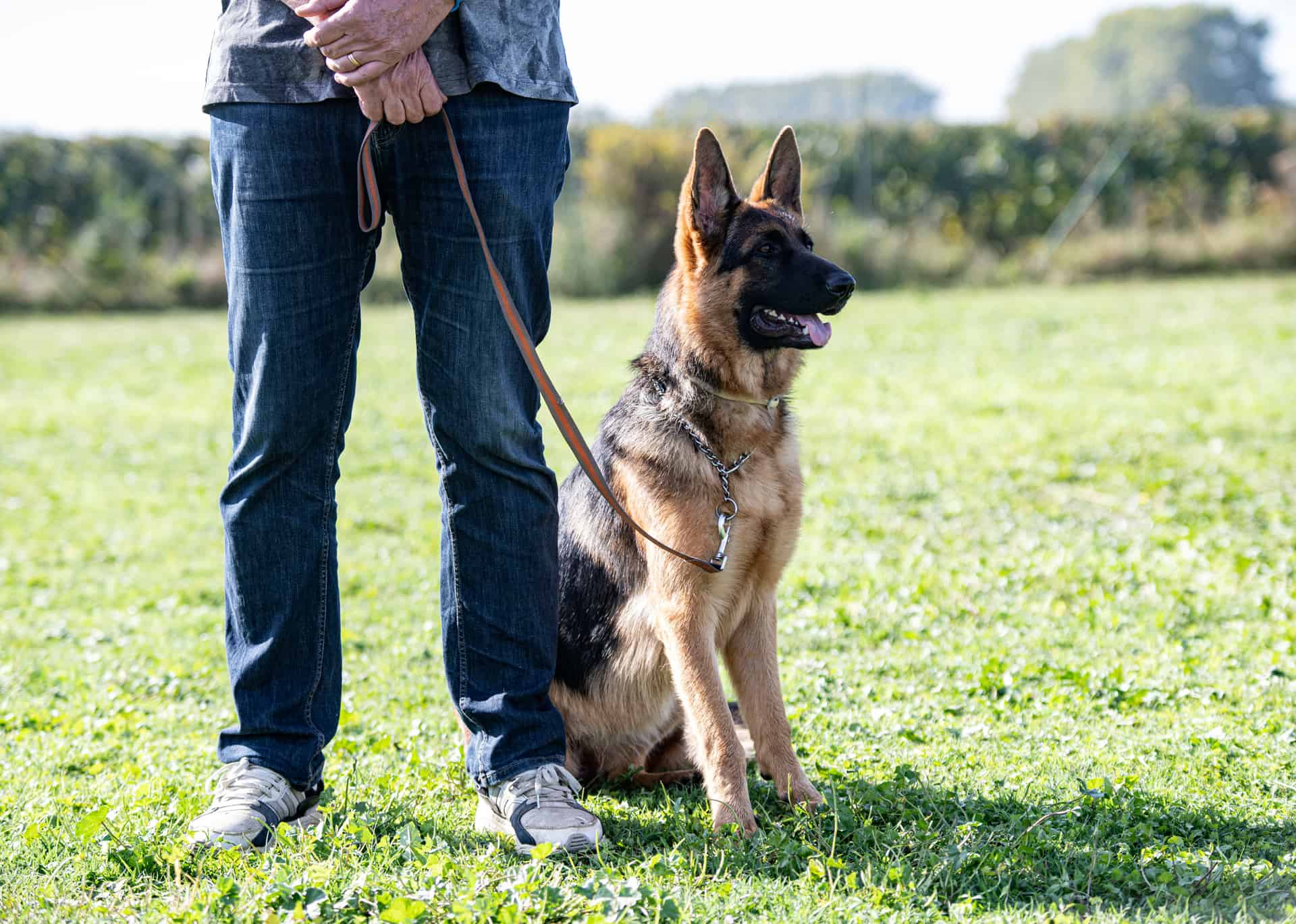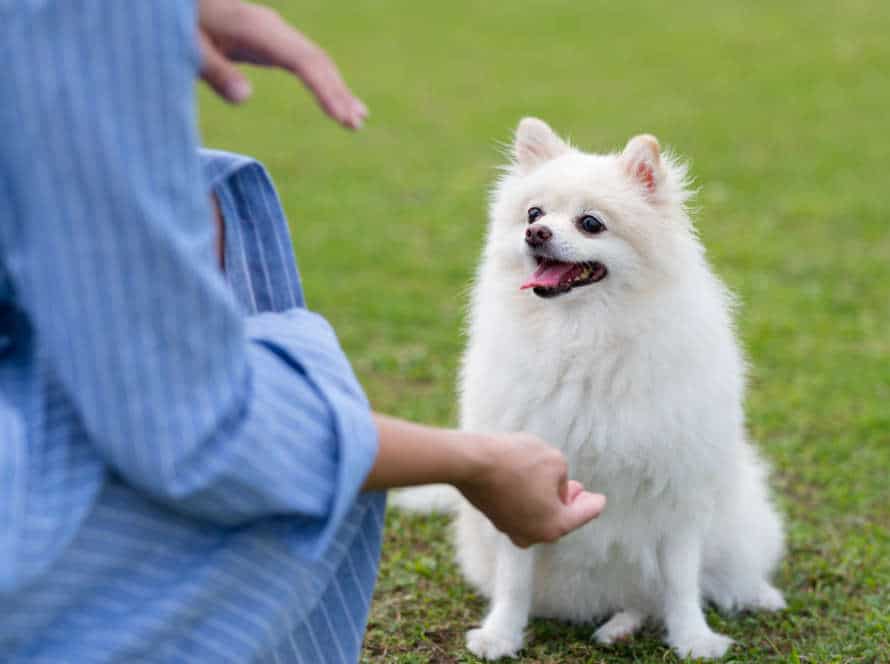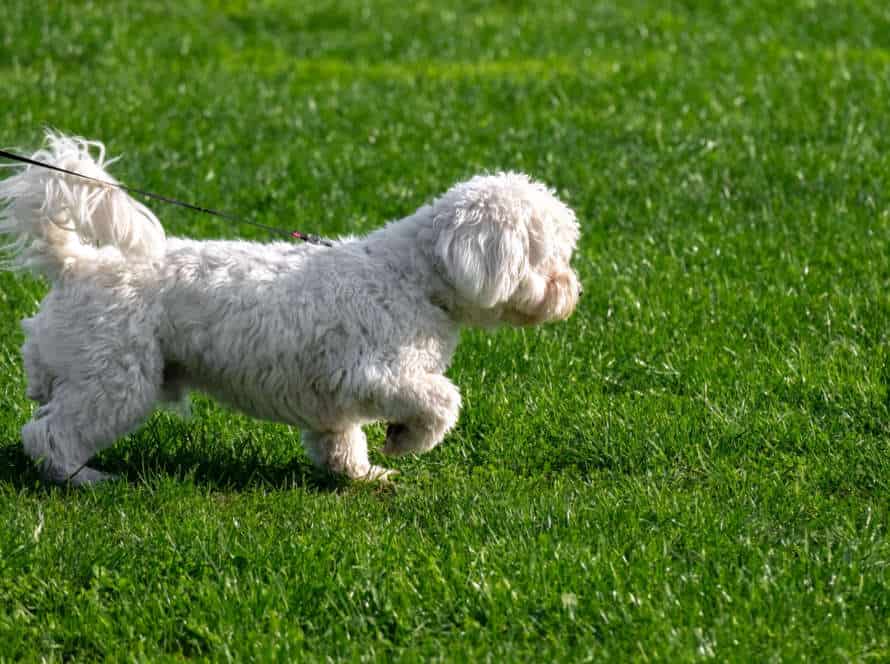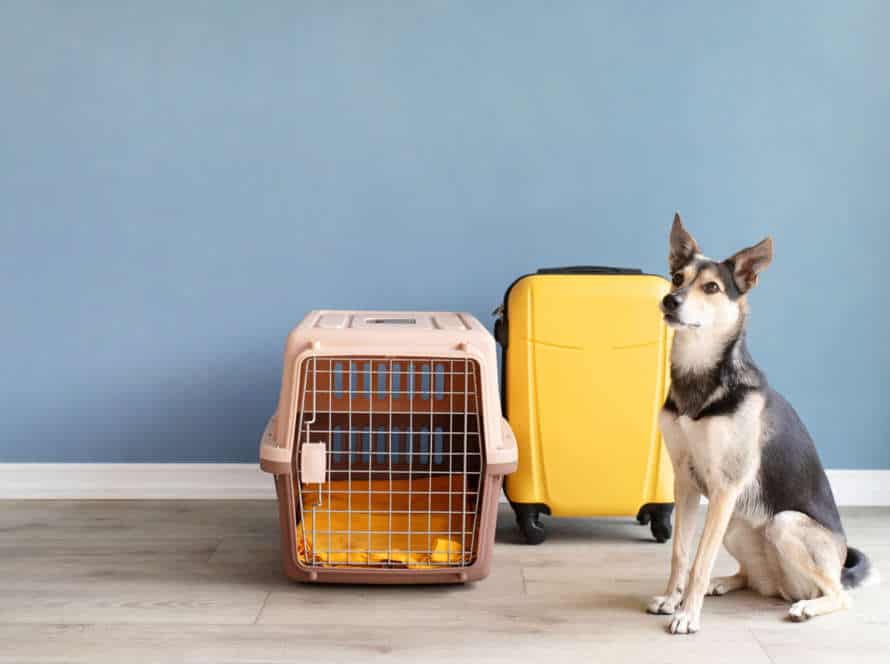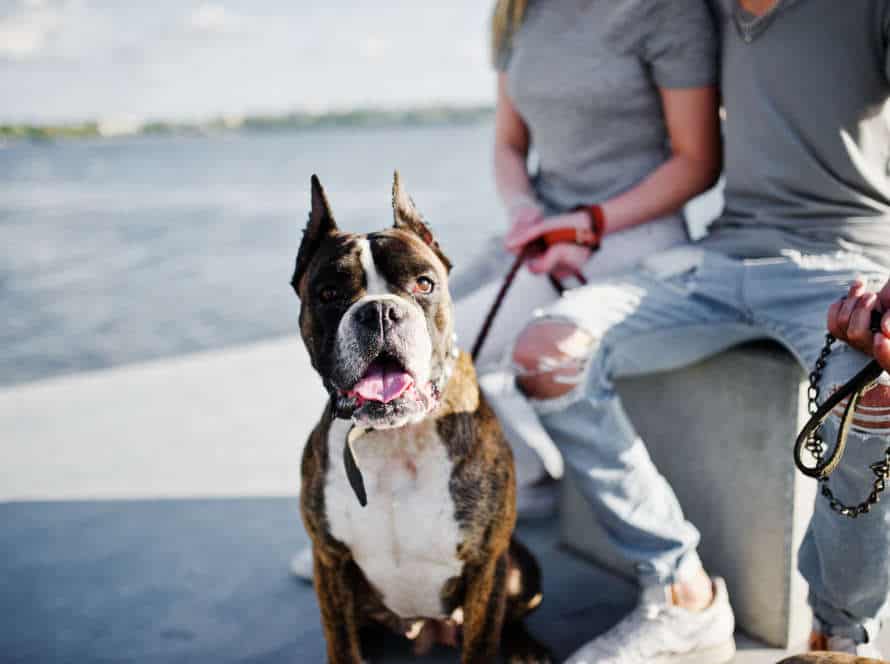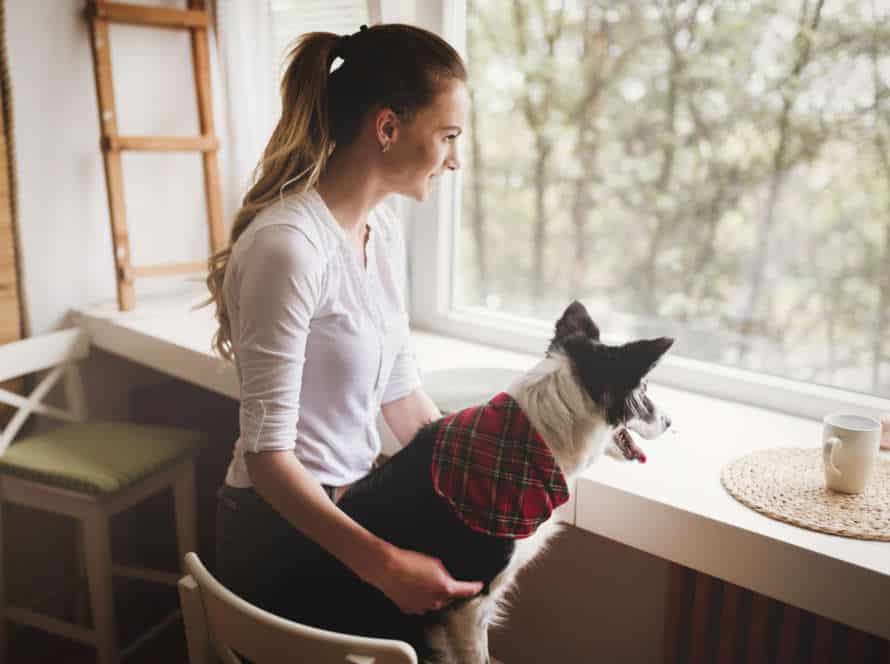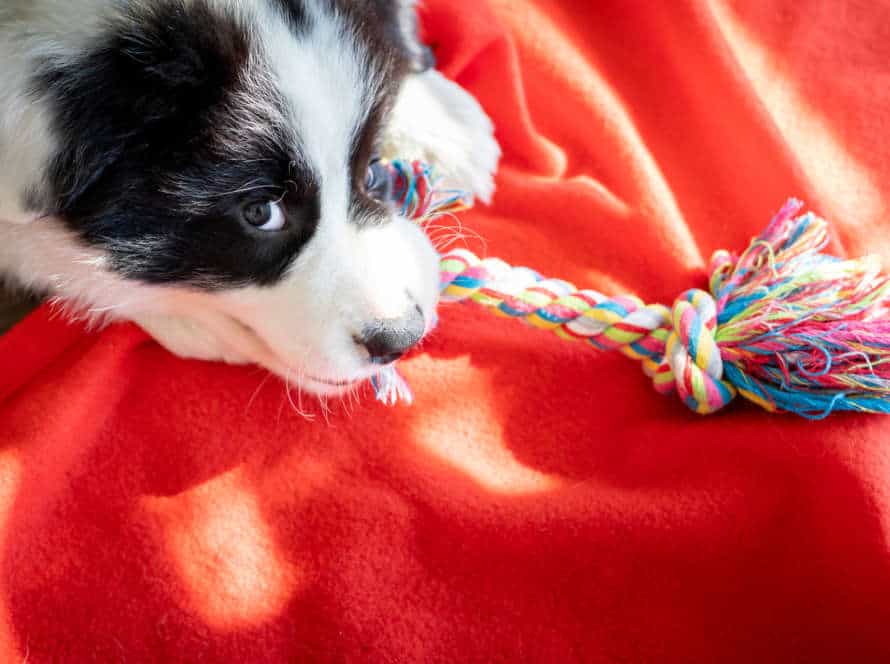Using Reward-Based Training for Loose Leash Walking
Utilizing a reward-based training technique is a fabulous way to educate your pup on loose leash walking. It’s a process that may take some time, yet the advantages are huge for both you and your furry companion. Instead of physical corrections or menace tactics which can cause stress and uneasiness to your dog, reward-based training focuses on reinforcing positive behaviors with rewards like tiny treats, recognition, or playtime.
Here are the steps:
- Begin by walking in a low-distraction environment like your backyard or a tranquil park. And, praise your dog for any moments when the leash is loose. Reward your pup with a small treat or playtime.
- Gradually raise the level of distractions in the atmosphere, yet still reward your pup when they walk calmly next to you with a loose leash.
- When your dog pulls on the leash, stop moving and stand still. Wait for your dog to look back at you for guidance. Then, call your dog’s attention back to you using a treat or a verbal cue like “look.” After your dog gives you their attention, reward them.
- Be consistent, patient, and keep practicing. In the end, your pup will learn that loose leash walking is the behavior that brings them the most rewards. This will lead to a happier and healthier relationship between you and your pup.
Understanding Loose Leash Walking
Loose leash walking is an imperative skill for all dog owners. This allows you to control your pup, while they get to explore and interact with their surroundings. To facilitate this, reward-based training is highly beneficial. Let’s take a look at the basics of reward-based training for loose leash walking!
What is Loose Leash Walking?
Loose leash walking is a skill dog owners and trainers strive to teach. With reward-based training, you and your pup can have a pleasant walk. Here are some tips for success:
- Start in a calm area like the backyard or a quiet park.
- Make sure your pup’s collar or harness fits well.
- Reward them when they walk beside you without pulling on the leash.
- As your pup gets better, increase the difficulty and length of your walks.
- Be consistent and patient. Reward the good behavior!
Why is it important?
Loose leash walking is key for a content pup. Reward-based training is the most successful way to make this happen.
Loose leash walking means the dog walks calmly alongside its owner and does not pull, lunge or tug on the leash.
Reward-based training involves positively rewarding good behaviour. This involves teaching the pup that staying calm on a leash brings treats, words of encouragement or petting. This type of training is far better than punishment-based training, which can cause stress in dogs.
Having a loose leash makes walks enjoyable and strengthens the bond between dog and owner. Reward-based training is a stress-free way to help your pup learn.
Understanding your dog’s behavior
It’s vital to get to know your pup’s behaviour to be able to train them effectively. Especially when it comes to leash walking. Reward-based training is the best way to do this. Here’s how to do it:
- Pick a reward – Go for something your dog loves, such as treats or praise.
- Leash walking – Begin by walking your pup on a leash next to you. Use a shorter leash for more control.
- Reward – Give your pet a treat or praise for walking without pulling the leash. Use positive reinforcement to make them link good behaviour to rewards.
- Repeat – Keep repeating steps 2 and 3. Gradually increase the leash’s length when your pup shows improvements and reward them for walking nicely.
- Be patient – Remember that leash walking takes time and patience. Dogs learn differently and at different speeds. Consistency is the key.
Pro tip: If your dog still pulls the leash, stop walking and wait until they stop before continuing.
Reward-Based Training Techniques
Reward-Based Training is a popular way to teach a dog how to walk on a loose leash. This uses positive reinforcement and rewards, such as treats, praise, or play. It focuses on rewarding the dog when they do the right thing – walking on a loose leash – instead of punishing them for pulling. Let’s look at the techniques used in this type of training!
Positive Reinforcement vs. Negative Reinforcement
Positive reinforcement and negative reinforcement are two reward-based training techniques used for loose leash walking.
Positive reinforcement rewards desirable behavior, such as a calm leash walk, with treats, verbal praise, and affection. It ignores or redirects bad behavior.
Negative reinforcement removes an unpleasant stimulus, like leash tension, when the dog walks calmly. It encourages good behavior by removing negative stimuli instead of adding positive ones.
Research shows that positive reinforcement produces better results in training dogs. Treats, praise, and affection create a strong bond with your dog and motivate them to repeat good behavior.
Pro Tip: Be consistent with rewards and use a gentle but firm voice to reinforce desired behavior.
Using treats effectively
Treats are a must for successful reward-based dog training. Here’s how to use them effectively in loose leash walking:
- Use a treat your dog loves but doesn’t get often, like chicken or cheese.
- Keep the treat hidden until it’s time for the reward.
- When your dog walks calmly beside you, give the treat right away.
- Reduce number of treats as your dog gets better at walking on a loose leash.
- Use treats alongside praise, playtime and cuddles.
- Pro Tip: Don’t forget to adjust your dog’s meals for the extra calories from treats.
Clicker Training
Clicker training is a reward-based technique used to teach dogs, like walking on a loose leash. To do this, use a clicker to mark the desired behavior. Then give a treat or reward. Here are the steps:
- Get a clicker and treats fit for your pup. The clicker should be loud and easy to use. The treat should be something they love and quick to eat.
- Train in a quiet place like your backyard or a park.
- Hold the clicker in one hand and treats in the other. Keep treats hidden until needed.
- When your pup walks beside or behind you, click the clicker and give a treat.
- Practice every day for several minutes until your pup makes the connection between the clicker and good behavior.
Pro tip: Be consistent and patient when training. Reward good behavior!
Eventually, your pup will learn to walk on a loose leash without the clicker or treats.
Techniques for Implementing Reward-Based Training for Loose Leash Walking
Reward-based training is an awesome way to teach our beloved pooches to walk on a loose leash! It is a technique that uses positive reinforcement to motivate the behavior we want. This method relies on the belief that your pup’s habits are determined by its experiences and the rewards it gets. In this article, we’ll talk about the proper techniques for applying reward-based training for walking on a loose leash.
Training inside the Home or Yard
Reward-based training is great for loose leash walking. You can do it indoors, in your yard, or in a park. Here’s how:
- Choose a quiet area with no distractions.
- Give your pup high-value treats like cheese, chicken, or meatballs.
- Hold a treat in your hand and start walking slowly; keep the leash loose.
- If your dog starts to pull, stop walking and wait for the tension to release.
- Reward your dog with a treat when it does.
- Gradually increase the distance and time you walk with your pup.
- Train several times a day for 5-10 minutes each time.
Remember: consistency is key! Stick to a regular training schedule and stay patient.
Training on Walks
Reward-based training is the most effective way to teach your pup loose leash walking. A training collar or harness gives better control and discourages pulling. Bring treats on walks, give rewards, and use positive reinforcement like petting and praise. Establish a routine and be consistent. Clearly communicate and be patient. This technique will improve the bond between you and your pup. So, stay positive!
Teaching Key Commands
Reward-based Training is a great way for Loose Leash walking. Crucial to this process is teaching key commands. Here’s what to do:
- “With me”. Encourage your pup to walk with a slack leash.
- “Stop”. Stop your dog from pulling. Pause, reward them with a treat when they look back.
- “Let’s go”. Get your pup moving after using the “Stop” command.
- “Wait”. Use this to stop at intersections and not cross without permission.
Train these commands in low-distraction areas. Use treats as a reward – it’s fun and keeps your dog motivated!
Troubleshooting Common Issues
Teaching your pooch to walk on a loose leash requires time and patience. Reward-based training is a great way to do this. It’s important to be consistent, patient and pay attention to detail. If problems arise, here’s how to troubleshoot them:
Pulling or Lunging on Leash
Pulling or lunging on the leash may be a common problem when walking your pup. But, reward-based training can help fix it! Here are a few reasons why your pup may pull and how to solve it:
- Training: Your pup may not know how to walk on a leash. Start with basic commands like “heel” and “stay” and increase difficulty gradually.
- Distractions: Your pup may pull because of something exciting in the environment. Redirect their attention back with treats.
- Fear/Anxiety: Dogs may also pull because of fear or anxiety. Counter-conditioning exercises can teach them to associate people or other dogs with positive things like treats or praise.
Remember to use positive reinforcement, like treats or praise, to encourage good behavior. This strengthens your bond! Also, be patient and consistent with your training. It may take time, but with patience and consistency, your pup will learn to walk on a loose leash.
Reacting to Distractions
Distractions can be an issue when teaching your pup to walk on a loose leash. Reacting to them can make or break your progress. Here are some tips to help:
- Offer high-value treats or toys to redirect your dog’s attention to you.
- If your dog pulls on the leash, stop moving. Wait for them to calm down then start walking again.
- No punitive measures like leash corrections. They can cause fear and anxiety in your pup.
- Reward your pup frequently when they follow your commands and walk on a loose leash.
- With time and consistency, your furry friend will learn to ignore distractions and focus on walking by your side. Pro tip: Always carry treats and use them generously during training!
Nervousness or Anxiety
Anxiety or nervousness can be common when it comes to training your pup to walk on a loose leash. Here’s how to use rewards to make the experience more positive for your furry buddy.
- Use a harness that doesn’t restrict your dog’s breathing or motion. This will help ease their anxiousness and create a good experience with the training.
- Give high-value rewards like pieces of cheese, meat, or peanut butter to keep them encouraged and happy during the training.
- Start off with short lessons and steadily lengthen the walks as your pooch becomes more relaxed. Be patient and consistent with the training, and always reward good behaviour.
With persistence and positive reinforcement, your pup will learn to walk on a loose leash without any anxiety or nervousness.
Consistency and Reinforcement
Reward-based training for loose leash walking? What’s that? It is a method of dog training based on operant conditioning principles. Positive reinforcement and consistency are key to this kind of training. Rewards such as treats, praise or play are used to reward desired behaviours, whilst undesired ones are ignored. Let’s see how reward-based training can help teach loose leash walking.
Staying Consistent with Training
Consistency and reinforcement are important for training your pup on loose leash walking with reward-based techniques.
- To stay consistent, use high-value treats. These treats should be yummy and smelly to keep your dog motivated.
- Also, use the same command each time, such as “let’s go” or “heel“.
- Be patient! This kind of training takes time and patience. Don’t expect your pup to master it in one session.
- Practice regularly, every day, to increase consistency and reinforce the desired behavior.
- Remember: stay positive, be patient, and stay consistent. Plus, celebrate the small victories along the way to long-term success!
Reinforcing Good Behavior
Reinforcing great habits is essential for successful dog training. Consistency in reinforcement helps keep your pup motivated and progressing with their training.
Here are a few tips for using reward-based methods for loose leash walking:
- Start in a low-distraction spot, such as your backyard or a peaceful park.
- Use a treat or toy that your dog finds really motivating.
- When your dog walks calmly on a loose leash, quickly reward them with praise, treats, or playtime.
- Consistency with reinforcement shows your dog that walking calmly on a loose leash is always rewarded.
- Gradually increase the level of distraction. Reward good behavior and ignore bad behavior.
With persistent positive reinforcement, your dog can learn to walk calmly on a loose leash. This makes walking more fun for you and your pup!
Understanding Setbacks and How to Handle Them.
Setbacks in training a dog to walk on a loose leash are common. But there are ways to manage them and ensure reinforcement of positive behavior. These setbacks could be due to distractions, anxiety, or an inconsistency in training.
It’s important to stay calm when a setback occurs. Reinforce good, calm behavior with praise and positive reinforcement. Some tips to handle setbacks:
- When the pooch pulls on the leash, pause and wait for them to return to your side. Praise and reward them for walking calmly.
- Practice in a low-distraction environment before taking them to busier places. This will help them to focus on you during walks.
- Use a clicker or a verbal cue to mark good behavior, and immediately reward with treats or praise.
Setbacks are normal during training. But with consistency and reinforcement, your pup can become a great companion on walks!
Frequently Asked Questions
1. What is reward-based training for loose leash walking?
Answer: Reward-based training for loose leash walking is a positive reinforcement technique that uses treats, praise, and other desirable rewards to encourage dogs to walk calmly on a leash without pulling.
2. Can all dogs be trained using reward-based method?
Answer: Yes, all dogs can be trained using reward-based training method. However, some dogs may respond better to different types of rewards, so it’s important to find out what motivates your dog.
3. How often should I reward my dog during loose leash walking training?
Answer: You should reward your dog frequently, especially in the beginning stages of training. Eventually, you can begin to phase out the rewards and only give them occasionally to reinforce good behavior.
4. What if my dog still pulls on the leash even with reward-based training?
Answer: It’s possible that your dog needs more training or a different type of reward. You may want to consider seeking advice from a professional dog trainer or behaviorist.
5. How long does it take to train a dog using reward-based training for loose leash walking?
Answer: The length of time it takes to train a dog using reward-based training can vary depending on the dog’s temperament and how consistent the training is. However, most dogs can be trained within a few weeks if the training is done regularly.
6. Is reward-based training humane?
Answer: Yes, reward-based training is a humane and positive technique that focuses on encouraging desired behavior rather than punishing undesired behavior.

